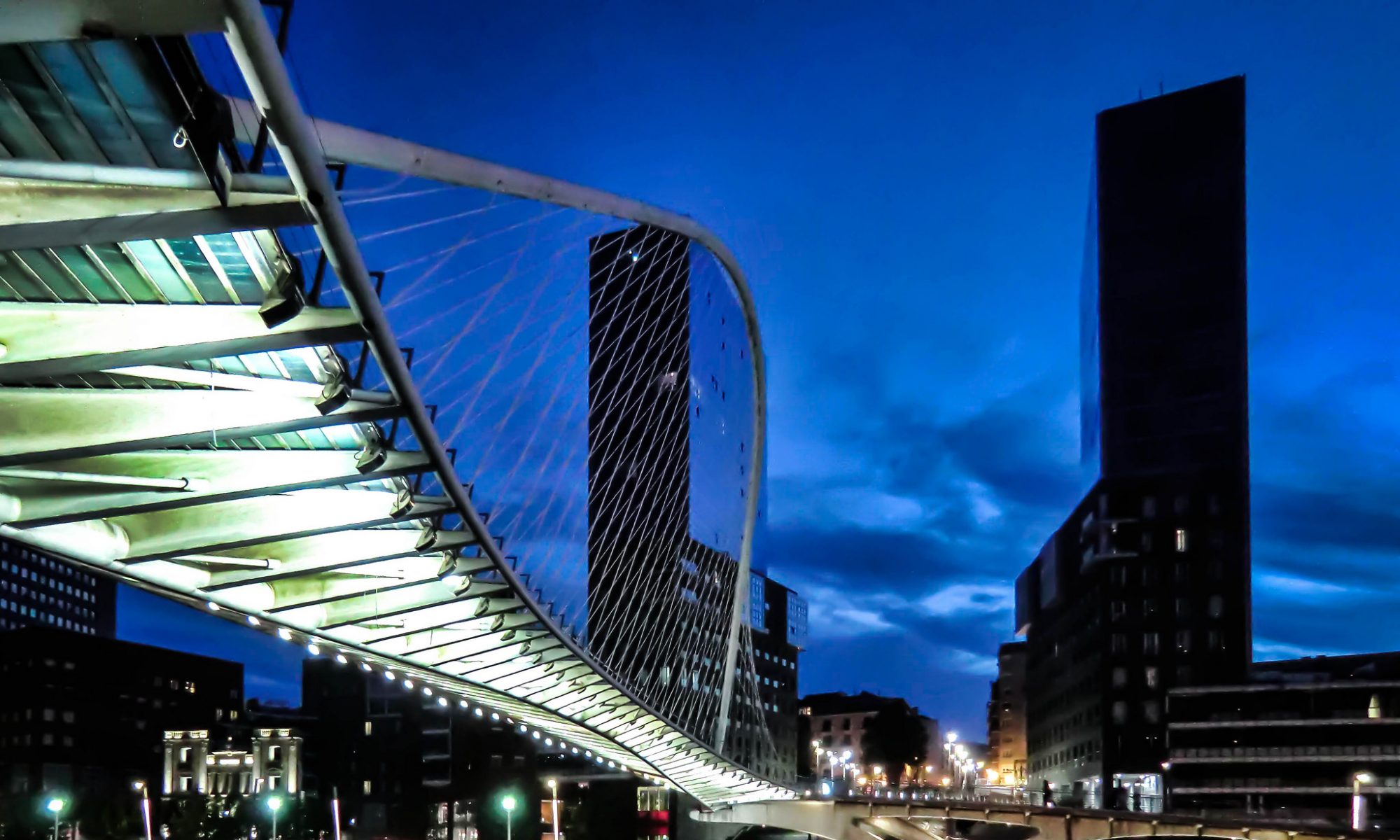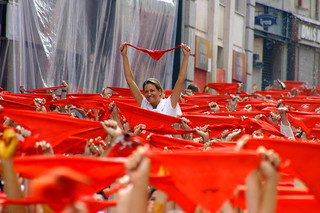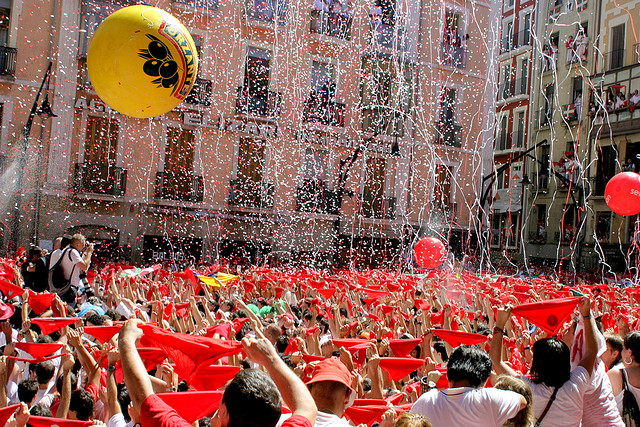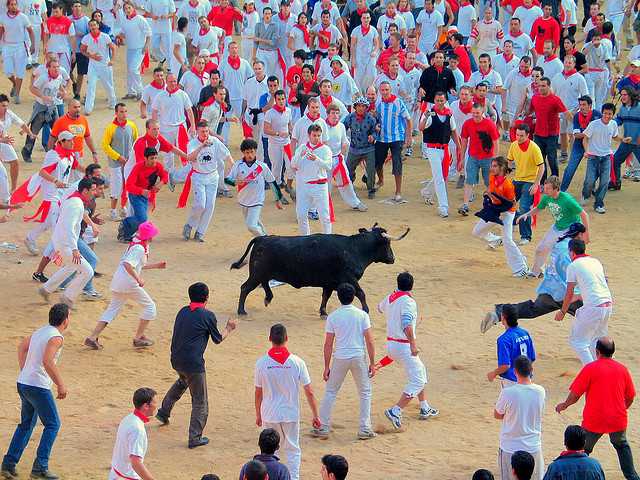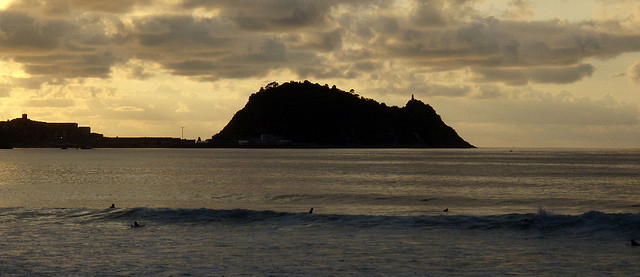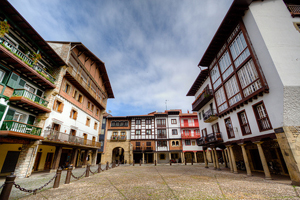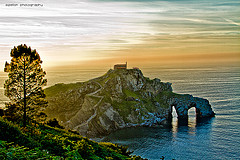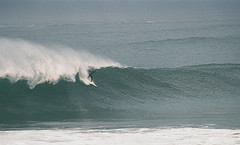We are approaching festivals that attract more tourists to Spain from all countries of the world. If we intend to go to Pamplona to enjoy a few days immersed in the party, it’s time to plan our trip. Taxiberia offers
personalized services so you wont have to worry about anything and can dive into the party and live the experience of a San Fermin with fullness.
In Taxiberia we deal with the transfer from the airport (usually in airports such as Madrid, Bilbao, Biarritz, Santander or Hondarribia) to your hotel and transfers you want to do during your stay in Pamplona. Online Hiring these services and our prices will avoid unpleasant surprises closed when pay and has the guarantee of a company and a few experts in which you can rely. Our chauffeurs are well acquainted with the city and what it offers during this festive week, so they can guide you at all times so you can fully enjoy a unique experience.
KEY MOMENTS OF SAN FERMIN FESTIVAL
Worldwide associate the festival of San Fermin at the borders and it is true that these are an essential part of the party, a reference that is special about Pamplona and its festivities. It is also known worldwide openness of the party, the atmosphere of the streets, guaranteed fun and multiculturalism of the people who come to enjoy the San Fermin festival.
But there is more, and even in Spain are well known scenes and major
milestones Party, does not hurt to do a review of what activities can not miss if we go to Pamplona during that magical week of the month of July.
The “chupinazo”
It is the beginning of the party, the moment that thousands of people waiting for a year and where festive madness erupts in Pamplona. At 12 noon on July 6, Plaza Hall is crowded with people waiting for the explosion of the rocket that starts seven-day feast in which Pamplona is completely transformed to become the party capital of the world.
It is the time when thousands are uncorked bottles of cava and red scarves, which hitherto has been knotted at the wrist, are placed in the neck, as a symbol that the fun has officially begun. Living the loud bang from inside City Hall Square is a unique experience, something unique and remember for a lifetime. From that moment, the party spread throughout the city like wildfire.
The “encierro”
As we said, is the best known event in the world, in part because the writer Ernest Hemingway, a lover of the San Fermin festival and collected his
experiences in his novel “Fiesta“. Also can claim to be an unforgettable experience for those who participate in it. Keep in mind that the closure has its traditions and norms and is an activity that involves risks that can not be taken lightly, so it is important to know if we intend to run in front of bulls.
Every day from 7 to July 14 and 8:00 in the morning released a pack of 6 bulls that run several sections from the center of Pamplona. Contrary to what many people believe, the idea is not running in front of bulls during that tour, but each rider chooses a career section and makes a short but intense, adrenaline shoots who has the courage to be surrounded of real fighting bulls and a crowd that reacts differently to the onslaught of the pack.
Bullfights
The same morning bulls involved in confinement, in the afternoon they do in bullfights. The San Fermin bull is one of the most important events calendar torean bullfighting and therefore the best and most successful right-of time. Bullfighting is a world with rules and requires a knowledge of the various parts
that make up the run, but can also be an event that wows people from other countries who visit us during these holidays.
Religious events
We can not forget that the holidays have a religious origin and that the July 7 is held in honor of San Fermin, the patron saint of Navarra, which gives its name to the festivities of Pamplona. That day is the procession of the saint’s image throughout the year is kept in the Church of San Lorenzo, out that day to walk the city streets accompanied by faithful and civil and ecclesiastical authorities. For the visitor is a good opportunity to meet an ancient tradition that retain the people who inhabit this city.
Other festivities
During the days that the festival takes Pamplona, we can enjoy a multitude of events that would be impossible to list them separately. In addition to the rocks and brass bands who set the party and we can find any street crossing the city, music lovers can enjoy concerts of all kinds, you can see the fireworks every night, attend dance performances or rural sports , have a good time in the amusement rides, etc.
Thus, we see that there are some reasons to go to enjoy the San Fermin festival anywhere in the world, as it happens every year at this time. Therefore, it is essential to plan a trip and their details, as Pamplona became during those days in a crowded city, with accommodation fully booked and overflowing public transport services, so our recommendation is that if you want to celebrate in fullness, is put in the hands of professionals such as Taxiberia, who can help and advise at all times so that the party experience is completely satisfactory for you.
In addition to its online booking on our website, if you need any advice, please contact us and we will be at your disposal to solve any problem you have. Our goal is to make your experience in San Fermin festival is as intense as possible. Welcome to the“fiesta”.
